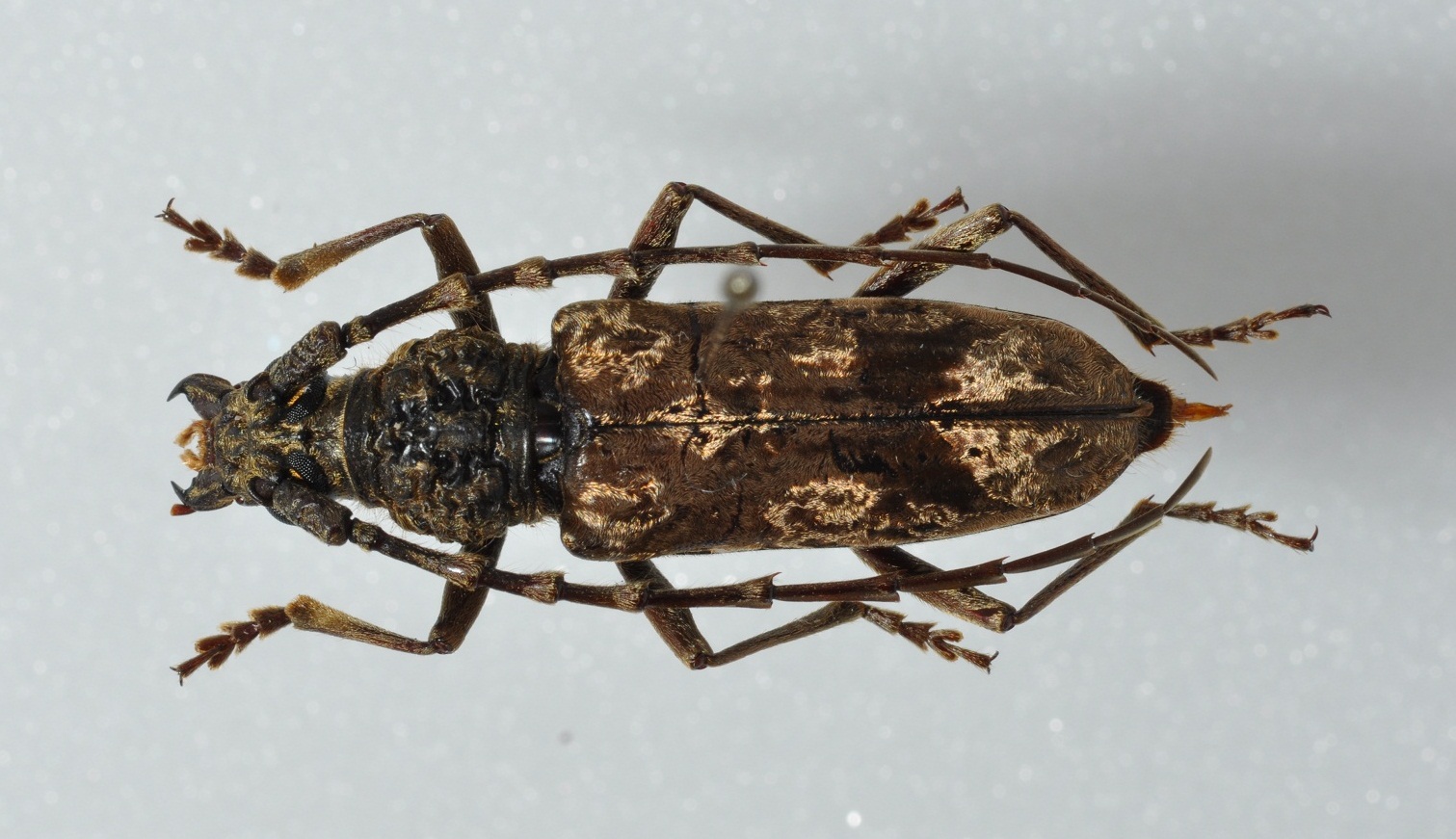| T O P I C R E V I E W |
| Pierre |
Posted - 10/06/2012 : 21:35:57

This one could be Trirachys bilobulatus?
Yunnan, 23 mm. |
| 5 L A T E S T R E P L I E S (Newest First) |
| Francesco |
Posted - 08/09/2018 : 10:28:19
Trirachys sinensis (Gahan, 1890) après notre révision du genre. |
| Pierre |
Posted - 11/06/2012 : 21:38:31
In this case, Aeolesthes sinensis.
Thank you Francesco. |
| Francesco |
Posted - 11/06/2012 : 08:56:08
Trirachys and Aeolesthes (as interpreted by Gahan and following authors) are evidently the same genus. Actually, they are two different genera, but Aeolesthes should be nearly entirely dismembered.
The species bilobulartus differs from holosericea in the postnotal field, which is transversally ridged rather to be smooth.
Your specimen is probably a female of A. holosericea, unless the postnotal field is longitudinally furrowed. In this case, it is A. sinensis Gahan, 1890. |
| Pierre |
Posted - 11/06/2012 : 07:29:08
This famous furrow is straight.
Other observations which make me think of Trirachys: antennae endoapically spined, and fore coxal cavities angulate externally, not rounded. |
| Francesco |
Posted - 10/06/2012 : 22:29:42
Same question about the intergenal furrow...  |


